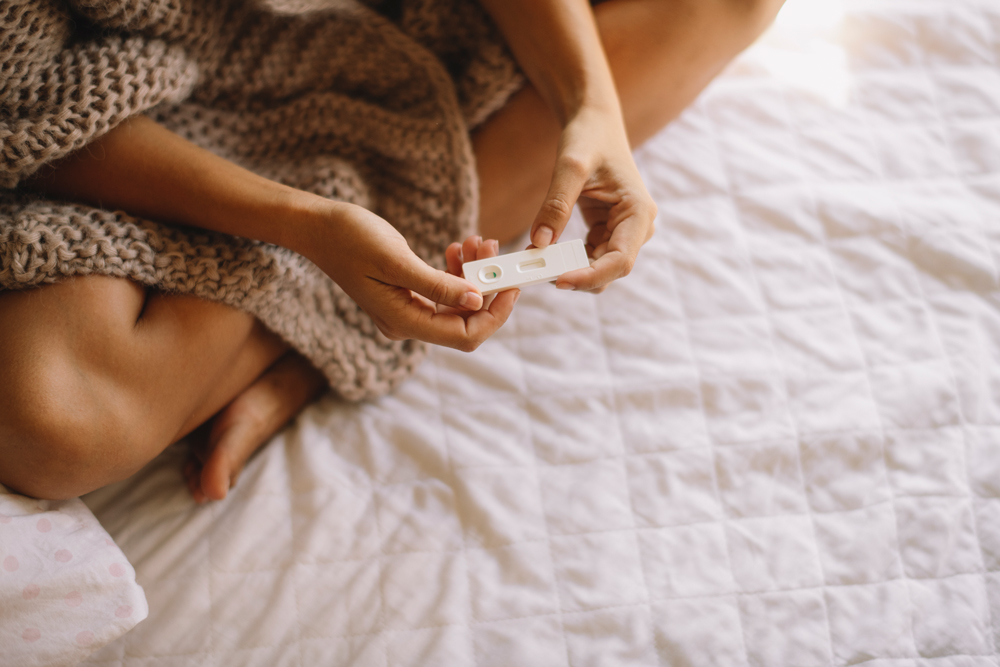Trying to Conceive? The Key Fertility Facts You Need To Know & When It’s Time to Seek Help

This week, 6-12 September 2021, is Fertility Week in Aotearoa – New Zealand. So, let’s talk about the reality of trying to conceive, how to go about it, and when to seek professional help for possible infertility.
UNDERSTANDING FERTILITY
The definition for ‘fertility’ is the state of being or quality of being fertile, meaning one’s ability to produce children through reproduction.
For females, key indicators for optimal chances of conception include:
- Age – those aged 30 and younger have the most optimal chance of pregnancy. While you can’t alter your age, you can consider your age when planning for having children and know how long you should try naturally for, before seeking help.
- Knowing your fertile window – identifying your ovulation window is an essential factor for conception.
- BMI – being underweight or overweight can affect fertility so it’s best to try to keep your body weight within the normal, healthy range.
- Alcohol – it’s recommended to avoid drinking alcohol and taking recreational drugs while trying to conceive as drinking can reduce fertility and increase the chance of miscarriage.
- Smoking – if you smoke, your chance of becoming pregnant each month is halved. Fertility New Zealand reports that “the adverse effects of smoking on fertility are reversed by 3 months after stopping – so stop well before trying to get pregnant.”
WHEN TO TRY TO CONCEIVE
The fertile window is the time in which an egg is released from the ovary via a process called ovulation, as well as the five days prior. During this time, it is recommended to have intercourse at least every second day to give you the best chance of conceiving.
It’s important to know that sperm can survive for up to five days, whereas an egg can survive for only 12-24 hours, so having intercourse before ovulation ensures there are sperm available for the egg when it is released. For most people with a 28 day cycle, ovulation occurs on day 14, however for some people, this can happen sooner or later, and it also can vary if your cycle is shorter or longer.
There are several ways to work out your fertile window:
- Change in cervical mucus. 2-3 days before ovulation occurs, the cervical mucus becomes clear, slippery, and of an egg-white-like consistency, to help the sperm enter the uterus via the cervix.
- Increase in luteinising hormone (LH). LH is a hormone that rises prior to ovulation, triggering the release of an egg from the ovary (ovulation). LH can be detected in urine with ovulation testing sticks (available from pharmacies) which may help you pinpoint ovulation.
- Tracking cycles. Menstrual cycle tracking apps and basal body temperature measurements are commonly used by people trying to conceive but aren’t the most reliable method for confirming ovulation.
If you are a single female or a same-sex female couple planning on having a baby, it’s a good idea to approach a fertility clinic early as there can be a waiting time for sperm donors.
WHAT IS INFERTILITY?
‘Infertility’ is talked about as primary infertility and secondary infertility. Primary infertility is typically regarded as not becoming pregnant after one year of trying to conceive, however, some couples will become aware of signs that they may have difficulty conceiving earlier than this. Secondary infertility is when there is difficulty conceiving after already having conceived and carried one or more pregnancies to term.
It’s estimated that approximately 1 in 4 people in New Zealand will experience infertility in their lifetime. According to Fertility Associates, it’s about half male-based and half female -based.
WHAT CAUSES INFERTILITY?
In males, the root causes of most fertility problems are unknown but usually present as abnormalities in sperm quantity, movement, or shape.
In females, common causes of infertility are:
- Tubal problems
- Endometriosis
- Ovulation disorders
- Polycystic ovaries
- Recurrent miscarriage
- Hormonal problems
- Autoimmune (antibody) disorders
Then there are some people who have no explainable cause for their infertility – and according to Fertility New Zealand, this occurs in approximately 15-25% of heterosexual couples. While having no clear-cut diagnosis can be difficult or frustrating for couples, those who are said to have unexplained infertility can often have good outcomes with fertility treatment as there’s no obvious cause with tubes, ovulation, and sperm.
WHEN TO SEEK PROFESSIONAL HELP
Fertility is known to decline with age, so while the adage of the ‘biological clock ticking’ can be an insensitive thing to say to someone, the scientific meaning of the term rings true. Fertility Associates offer helpful visuals that demonstrate the recommended timeframes for how long one should try to conceive naturally for – based on their age – before seeking help. You can also find their biological clock tool here.
However, some people may be advised to seek help early if they have polycystic ovaries, endometriosis, or have been through a cancer diagnosis.
If you’ve been trying to conceive for a while (12 months if the female is under 35, 9 months if the female is over 35, and 6 months if the female is over 40) and haven’t had any luck yet, see your GP for preliminary tests. If you meet the eligibility criteria for publicly funded fertility treatment, your GP can refer you to a specialist.



